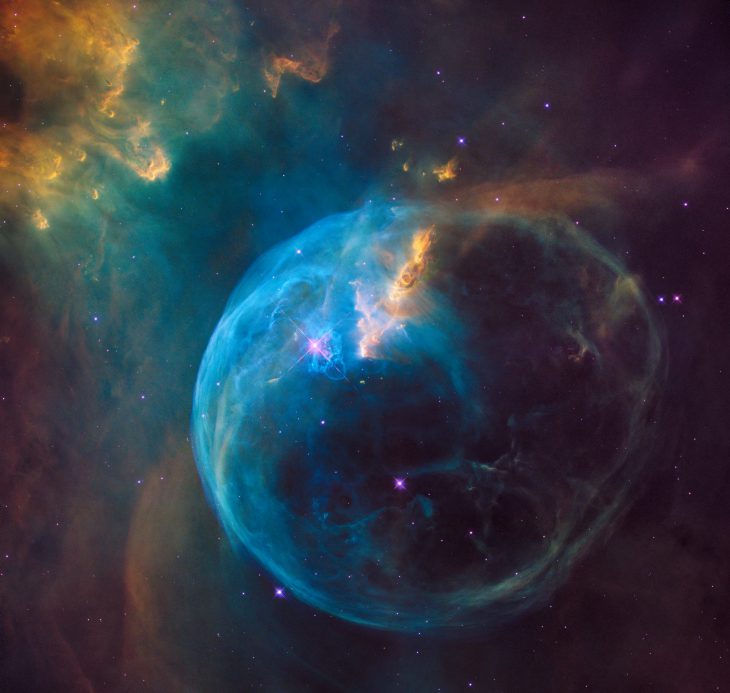Are we alone in the universe? We still don’t know, but looking at other solar systems is a good first step to find out.
Other “solar systems” are made up of a star, like our sun, with planets orbiting it. Planets around other stars, also called exoplanets, were first detected in the 1990s, but current technology only allows astronomers to closely examine planets similar to those of Neptune and Jupiter. Neptune and Jupiter-like planets are light and puffy, like cotton candy. This means that they appear bigger and are easier to detect. Smaller, Earth-like planets are better places to look for signs of Earth-like life, also called biosignatures, but they are more difficult to observe.
When scientists do observe exoplanets, the atmosphere, which is the shell of gases around a planet, is the first and often easiest thing they “see” with their instruments. Many biosignatures can be detected through analyzing light that interacts with the atmosphere of a planet. Scientists observe these light patterns using instruments called spectrometers. With these, they analyze the intensity of light at different wavelengths. These wavelengths are the ‘fingerprint’ of different gases in the planet’s atmosphere.
Our ability to detect gases in a planetary atmosphere depends on how much of it is present. Generally speaking, higher levels of gases are easier to detect. Exoplanet scientists are very interested in gases like oxygen, which makes up 21% of the modern Earth’s atmosphere and is produced by plants and some types of microorganisms. Other gases produced by life, such as methane, could also be biosignatures, especially if they build up to high levels in a planet’s atmosphere and are clearly connected with life.
While oxygen is one of the main signs of life on the Earth, it can also be produced by processes that aren’t life. To make sure any detection of life is real, we need to look for other gases that are normally produced by life along with oxygen.
Methylated gases are one exciting group of biological products. “Methylation” refers to the attachment of a group of atoms called a methyl group – a carbon atom and three hydrogen atoms (CH3) – to another atom or molecule. Without life, there aren’t many ways to produce large amounts of most of these gases. This makes gases with a methyl group excellent biosignatures because they clearly point to life.
While we only know about life on Earth, methylated gases are actually produced by a critical biological process – removing toxins from an organism’s body or nearby environment. This core process is likely to be necessary for life, no matter what planet it is on.
In our study, we use the gas methyl bromide (CH3Br) as a test case. CH3Br is produced on Earth by marine algae, kelp, bacteria, and plants. We used computer models to simulate the living processes that make CH3Br and chemical reactions between the gas and other molecules in the atmosphere. This tells us how much of the gas will remain in the atmosphere once it has reacted with other molecules.
In a separate model, we simulated telescope observations and determined the time necessary to identify CH3Br in a planetary atmosphere. These calculations are useful for planning future telescope missions to make sure they are most useful for scientists.
We found that CH3Br would be the highest and easiest to detect on planets orbiting a small, cool type of star called an “M dwarf.” Around stars like our Sun, the CH3Br is removed from the atmosphere by another molecule called hydroxide, or “OH.” OH is produced when the light from a star breaks down water. Water is only broken up at specific wavelengths of light which are only produced at low levels from M dwarfs. This results in higher atmospheric levels of CH3Br around M dwarfs. M dwarfs planets are among the first to be observed with cutting edge observatories in the next few years, so this result is especially exciting.
In conclusion, our study shows that looking for methylated gases is a promising possibility in the search for biosignatures. We plan to study additional methylated gases to further improve our ability to detect life outside of the solar system.


